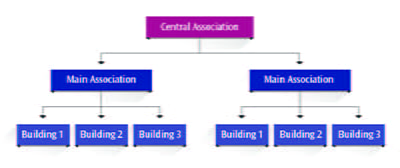Under Bahrain's Real Estate Regulatory Authority (RERA) the regulatory regime in relation to the ownership of Joint Property and complex developments is an area which has seen significant change in the country.
Typically in Bahrain a recognised 'Master Developer' usually retains ownership of the master community facilities save where it intends to divest ownership to the Government. Whilst previously there was no law relating to the maintenance, upkeep and the recovery of service charges in relation to master developments, developers would dealt with this through a contractual framework which linked all owners to one central document usually referred to as a 'Master Community Declaration'.
With the management of developments high on RERA's agenda, RERA introduced Resolution 7 of 2018 (Resolution 7), which provides the market with guidance on the regulation of joint property and owners' associations in relation to simple developments.
The previous practice under the Bahrain Civil Code required owners of a joint property to sign an incorporation document which was notarised and then registered at the municipality in order to establish an owners' association. Developments have since become more complex than envisaged under the old law and now under the new regime an owners' association is created automatically by the registration of the first transfer at the Survey Land and Registration Bureau (SLRB) (i.e. immediately upon the first title deed reflecting the name of the new owner). Along with the Law 27 of 2017, the law governing for joint properties is now Resolution 1 of 2020 (Resolution 1) which provides a development management framework for both simple and complex developments and has replaced Resolution 7.
Central and Main Owners Associations
Although Bahrain contains several developments which may be considered as traditional master communities, we understand, it is the policy of RERA to move away from structures where there is little input by the end users in the upkeep and maintenance of the common development infrastructure and move towards schemes giving the actual owners/end users an input and a level of control over the common areas within a development. Resolution 1 permits developments to have a number of management layers (with up to three layers) including a Central Owners' Association, Main Owner' Associations and Subsidiary Owner Associations. The diagram below illustrates a structure where there are three layers.
The Central Owners Association includes two members being the Main Owner Associations which each include several Subsidiary Owner Associations as its members.

Now that RERA has provided the market with acceptable management structures it is imperative that a workable and suitable structure is selected and agreed upon at the earliest instance and ideally prior to the approval of the Subdivision Plan by the Urban Planning Authority (UPA). New and existing developments are required to change their structure to fall in line with Resolution 1 and there is scope within Resolution 1 which permits existing projects to convert to Joint Properties where it was not the developer's original intention.
If a development or sub development (part of a larger development) comprises of several plots which are to contain high rise buildings, each of which include common areas, an owners' association is required to be established for each building. Each building owners' association would then become a member of a higher association (Main Owners' Association) which would deal with the common areas of the whole development i.e. roads and common infrastructure.
When determining which structure to adopt it is imperative the Property Location Plans (PLPs), which show the common areas for each owners' association and are registered at the SLRB clearly identify the areas which fall in the ownership of each separate owners' association, so for example where a component includes common area and forms part of a larger development the PLPs for the whole development should clearly identify the common areas for that component and any higher level common areas within the larger development.
As it is the intention for title deeds of the common areas to be created by the SLRB, it is sensible that the common areas for each owner's association are approved by the UPA at the time of approval of the Subdivision Plan. With developments where the Subdivision Plan has been approved but a RERA licence not granted, we believe it the intention of the UPA, the SLRB and RERA to work together in approving the PLPs.
In preparing the first plans to implement the development, there may be some value in developers inviting RERA to join meetings with the SLRB concerning design of the plans as this certainly would avoid any potential future problems.
Ownership of Common Area
Occasionally the UPA, in approving the Subdivision plans have noted "all land dedicated for roads, public corridors, services and open areas are to be registered under the name of the owner of the plot”, which would be the developer. If this is not the case it is important, that all shared areas are owned as common area and not retained in the name of the developer, and the plans be processed as PLPs under Law 27 of 2017 and not as normal subdivision under Law 13 of 2013.
The effect of the SLRB registering the PLPs is that it clearly indicates an intention to create a joint property under Law 27 of 2017 and upon registration the common areas in the PLPs should be transferred into the name of the relevant owners' association.
When deciding on the legal structure developers should see the developments as standalone projects and decide on a structure meeting the requirements of the development. With mixed use projects which include various components, key reasons for selecting a central association is that it allows sub-developers purchasing plots the ability of placing a main association structure on each of their plots. A central joint property retains this flexibility, although it will be necessary to provide a degree of disclosure when selling parts of the development.
Another approach which may be adopted by developers involve dividing plots by a single owners' association containing four buildings (A, B, C and D), each with its own common area within the building and with additional common area shared between the buildings. In preparing the by-laws for the single association, the owners of building A could have exclusive use of the common areas within building A, and therefore pay the cost of its maintenance. So too, the owners of building B have exclusive use of the common areas within building B and so on. However, the common area outside the four buildings may be used by owners within all buildings and maintenance costs are paid accordingly.
Additionally, Developers may consider whether a plot could later be subdivided to create new units which could then each contain an independent owners association. Again the Subdivision process must be reviewed with SLRB and it is useful to get RERA involvement at the earliest opportunity to avoid delays when applying for the RERA licences for developments.
With the introduction of the new regime is it important more than ever to agree a viable and workable structure as soon as possible and Trowers & Hamlins have in the short period of the establishment of RERA assisted many existing developments with the transition to the new regulatory requirements and are currently drafting documentation for the establishment of a layered which will be one of the first in the Kingdom.
